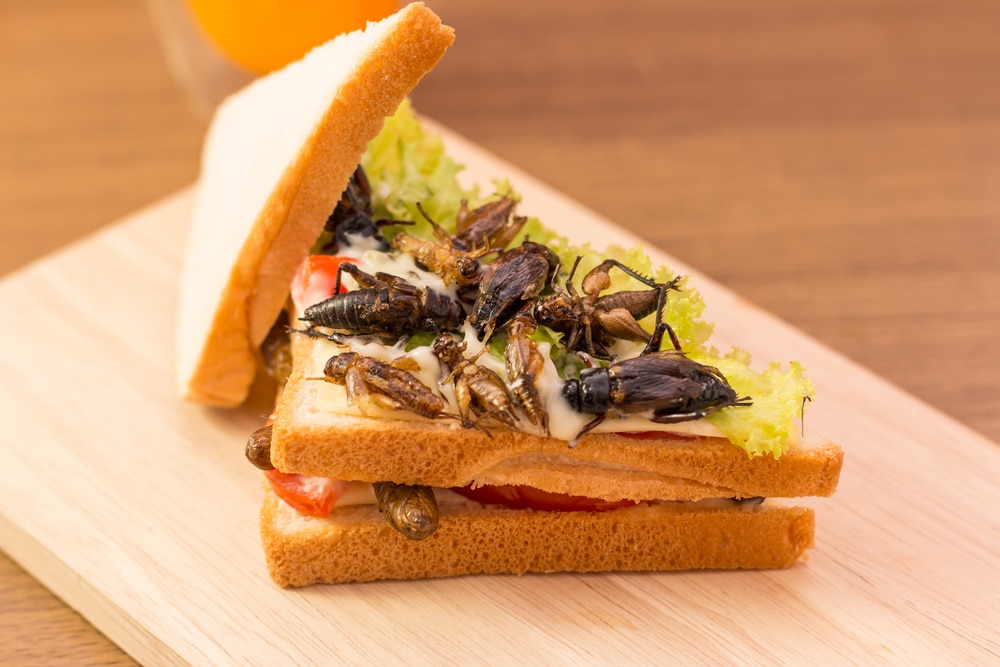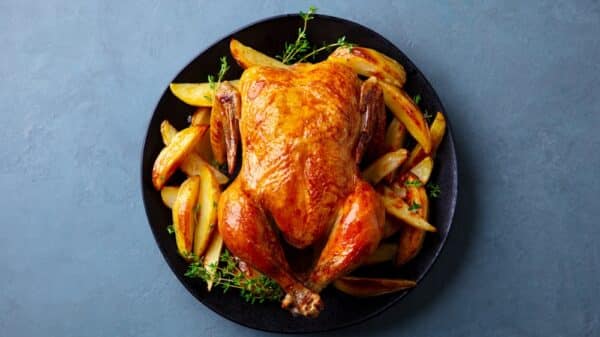ir exoskeleton. This combination of protein, fiber, and antioxidants makes ants an appealing addition to your diet. You can integrate them in various ways – think about tossing roasted ants into a salad, blending them into a flavorful dip, or even using them to jazz up your favorite stir-fry dish.
Imagine standing in your kitchen, ready to prepare dinner. You have all your ingredients lined up, but you want to shake things up a bit – why not reach for some roasted ants? They could add that unexpected crunch and a burst of flavor that takes your dish from ordinary to extraordinary. Plus, you can feel good knowing you’re exploring a more sustainable and nutritious option for your dinner table.
In exploring these crunchy additions to your meals, you’ll find that ants are not just edible; they’re a celebration of flavor and health. They’ve been enjoyed by countless cultures around the globe, weaving their unique taste into various traditional dishes. By embracing ants in your cooking, you’re not only trying something new but also connecting with a worldwide culinary tradition that promotes sustainability and nutritional benefits.
Incorporating insects into your diet can seem daunting at first – after all, we’ve been conditioned to see them as pests rather than potential food sources. However, as you start to learn more about their health benefits and environmental impact, the apprehension can give way to excitement. It’s time to embrace the future of food, where the bugs on our plates could very well lead to a healthier lifestyle for us and a more sustainable planet for future generations. Whether you’re seeking to improve your nutrition, cut down on your ecological footprint, or simply have a fun culinary adventure, bugs are worth considering.
In finding various ways to include insects into your meals, consider your favorite recipes and think of how these surprising ingredients might elevate them. Imagine savory cricket tacos, crispy beetle scones, or a hearty mealworm pasta dish. Each of these tiny nutritional powerhouses can add flavor, texture, and an impressive protein punch while helping you tread a little lighter on the Earth. So the next time you’re mulling over dinner options, don’t shy away from the possibility of including insects. Instead, see them as a fun and healthy way to spice up your meals, all while contributing to a more sustainable food system that benefits us all.Grasshoppers are a delightful component of numerous cuisines worldwide and have found a unique place in American culture as well. Have you ever wandered through T-Mobile Stadium, home of the Seattle Mariners, and noticed fans munching on chapulines? These toasted grasshoppers, seasoned with zesty chili-lime, have become a local favorite, embodying the spirit of enjoying America’s beloved pastime with a unique twist.
In addition to being a fun snack, grasshoppers are an exciting addition to a variety of dishes. Imagine digging into a plate of grasshopper tacos or stir-fry. Their nutty flavor and satisfying crunch often remind people of a tasty handful of peanuts, making them a versatile option that can easily fit into your regular meals. Across the globe, from South America to Africa and even in Australia, grasshoppers are celebrated in various culinary traditions for their flavor and nutrition.
A fascinating research study conducted at the University of Dschang in Cameroon highlights just how beneficial grasshoppers can be for our health. The study focused on different protein sources and their effects on physical well-being. The results were compelling—rats fed a diet rich in grasshoppers showed significant improvements in fur quality, sleep patterns, and reproductive health compared to those that received other protein sources. It’s a powerful reminder that these tiny creatures can pack a mighty nutritional punch!
Now, let’s move on to caterpillars. In southern African nations, the larvae of the mopane moth are regarded not just as food but as a delicacy central to many exciting recipes. They might look like mere critters, but these little guys offer a serious boost of nutrients often lacking in many diets. For meat lovers looking for an alternative, imagine indulging in something that has a rich, meaty essence and a texture even comparable to beef.
Caterpillars are particularly high in zinc, a mineral that many people don’t get enough of in their diets. Zinc is crucial for a robust immune system, helping your body fend off colds and infections while also playing a role in wound healing. They also contain magnesium, known for its soothing properties. If you tend to catch a cold often, munching on caterpillars could be a tasty and nutritious addition to your snacking routine.
Next up, let’s talk about giant water bugs. These remarkable insects stand out not just because of their size—about the length of a human finger—but also due to their distinctive features. Found globally, especially in North and South America, Asia, and Australia, these bugs have a unique flavor that can elevate numerous dishes. What if I told you that they have a taste reminiscent of scrambled eggs with a hint of black licorice? It might sound surprising, but once prepared properly, they can be a delightful addition to your meals.
Typically, they are boiled or fried, and unlike some other insects, their exoskeletons are often removed before cooking. This could be a great opportunity to get creative in the kitchen—the shells can even be used to enhance the flavors of sauces! Nutritionally, giant water bugs are fantastic; they are a great source of protein, rich in minerals like zinc and iron, and stand out for their high calcium content. Since most of us struggle to incorporate the right amount of calcium into our diets, enjoying giant water bugs could be a delicious and practical solution.
Moving on to scorpions, which you might only see in novelty lollipops, these arachnids are actually a sought-after delicacy across Asia. In traditional Chinese culture, scorpions are not just snacks but are also believed to offer various health benefits in traditional medicine. Cooking scorpions can indeed feel a bit daunting at first; however, when prepared carefully, they can be entirely safe and surprisingly delicious. Imagine biting into a crunch that’s often described as a mix of crab and chicken—a unique culinary experience waiting to happen!
Before you dive into these exotic delicacies, it’s important to remember that the venom in a scorpion’s stinger is safely removed during preparation. The heat from cooking neutralizes any remaining venom, allowing you to enjoy them worry-free. They aren’t just an intriguing treat; scorpions are also packed with protein and rich in vitamins like selenium, crucial for several bodily functions, including thyroid health and even boosting the immune system.
Next on the list are termites, which might carry a negative connotation for most homeowners. While they can munch through wood, these tiny bugs could potentially be a game-changer for your diet! In many parts of Africa, Asia, and South America, termites are savored as crunchy snacks. They are incredibly nutritious, loaded with healthy fatty acids, minerals, and vitamins.
Termites are usually roasted or dried, enjoyed as a crispy snack, or even used in salads as a crouton substitute. Think about adding them to your favorite baked goods or enjoying them with savory treats—just imagine how these little bundles of joy could elevate your snacking! They are rich in omega-3 and omega-6 fatty acids, which are essential to our nutrition but must be obtained through our diets. These fats play a crucial role in heart health, reducing inflammation, and even combating depression. By incorporating termites into your meals, you could be enhancing not just flavor, but your nutritional intake.
Lastly, let’s discuss mosche—those little flies buzzing around our gardens and homes. Not often appreciated, these tiny insects offer a sustainable source of protein. Commonly consumed in Africa, mosche are small enough to make for a perfect snack, and with their global availability, they have the potential to feature more prominently in diets around the world.
These various insects offer not only an adventurous culinary experience but also remarkable nutrition that can enhance your health. Whether you’re looking for alternative protein sources or simply open to trying new things, incorporating insects into your meals could be a flavorful and nutritional investment for you and your family.Mosche, or house flies, might not seem like an appealing food source at first glance, but they actually hold remarkable potential as a high-protein substitute for traditional meat. These small creatures can be transformed into patties that mimic beef or ground into an additive to enhance a variety of dishes. The truth is, mosche aren’t just a quirky source of protein for us humans—they can also play a valuable role in livestock feed. In an age where raising livestock puts immense pressure on our environment, with vast amounts of agricultural land dedicated to feeding these animals, mosche emerge as a sustainable and healthier alternative.
One major draw of mosche is their nutritional profile. They’re low in calories and pack a punch with protein content, making them an excellent choice for those looking to maintain a balanced diet. Admittedly, while they might not be as rich in fatty acids as some other insects, they offer a unique flavor profile that can rival more conventional protein sources. So, if you can set aside the initial “ick” factor and consider the benefits, using mosche as a food source could effectively address your pest problems while providing a nutritious addition to your meals.
Now let’s talk about tarantulas, a food source that challenges our fears. If you’ve ever felt a chill at the sight of these eight-legged creatures, you might be surprised to learn that many find eating tarantulas to be an adventurous and delicious experience. In places like Cambodia, these spiders are not just a local delicacy but a beloved treat. Often fried, tarantulas are dubbed “nature’s seafood” because their flavor has been likened to that of shrimp or crab, with a crispy exterior and a tender, juicy inside. Imagine popping one of these little wonders coated in garlic and sugar into your mouth—sounds intriguing, right?
What’s more, these arachnids are packed with folic acid, which is particularly critical for expectant mothers. This essential nutrient plays a vital role in preventing serious birth defects like spina bifida during pregnancy. Beyond that, folic acid is a powerhouse for mental health; it helps lower the incidence of strokes and shields our brains against cognitive decline. So, indulging in tarantulas isn’t just about a unique culinary experience; it’s also about feeding your body what it really needs.
Next up, let’s dive into the world of libellule, or dragonflies, which are often overlooked as an excellent food option. These stunning creatures zip through the air with grace, but, believe it or not, they can be quite the delicious treat! In Japan, libellule are not only a culinary curiosity but are also consumed for their supposed medicinal properties. They are often compared to chicken sashimi—a delicate and refined dish celebrated in Japanese culture. In Indonesia, you might find them fried in coconut oil and served over fluffy rice, adding a touch of global flavor to your plate.
You can enjoy libellule as a standalone snack or incorporate them into dishes such as tamales and tacos, bringing a whole new level of flavor to your cooking. They’re low in fat and rich in protein, which is fantastic for keeping your energy levels up throughout the day. The unique fat content in libellule also helps store energy and protects our cells from harmful substances. Their significant vitamin content makes them a nutritious option that can easily fit into a well-balanced diet.
Exploring these unconventional food sources doesn’t just introduce you to new flavors; it also offers a chance to consider sustainable alternatives for our ever-growing population. By embracing the potential of insects like mosche, tarantulas, and libellule, we can take a healthy step towards feeding both ourselves and the planet without compromising on taste or our well-being.































